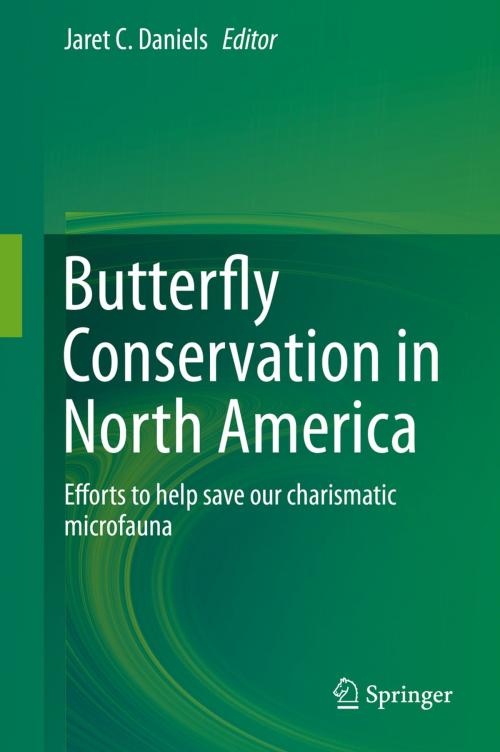Butterfly Conservation in North America
Efforts to help save our charismatic microfauna
Nonfiction, Science & Nature, Science, Biological Sciences, Entomology, Nature, Environment, Environmental Conservation & Protection| Author: | ISBN: | 9789401798525 | |
| Publisher: | Springer Netherlands | Publication: | July 27, 2015 |
| Imprint: | Springer | Language: | English |
| Author: | |
| ISBN: | 9789401798525 |
| Publisher: | Springer Netherlands |
| Publication: | July 27, 2015 |
| Imprint: | Springer |
| Language: | English |
The book addresses this critical need by providing a straightforward and easy to read primer to key elements of at-risk butterfly conservation programs including captive husbandry, organism reintroduction, habitat restoration, population monitoring, recovery planning and cooperative programs.
Impacts from habitat loss and fragmentation, invasive species, and climate change continue to accelerate the rate of imperilment and necessitate increased conservation action.
Zoos, natural history museums, botanical gardens and wildlife agencies are progressively focusing on insects, particularly charismatic groups such as butterflies and native pollinators, to help advance local conservation efforts and foster increased community interest and engagement.
Today, many institutions and their partners have successfully initiated at-risk butterfly conservation programs, and numerous others are exploring ways to become involved. However, insufficient experience and familiarity with insects is a critical constraint preventing staff and institutions from adequately planning, implementing and evaluating organism-targeted activities.
The information provided is intended to improve staff practices, learn from existing programs, promote broader information exchange, and strengthen institutional ability to develop new or improve existing butterfly conservation initiatives.
The information provided is intended to improve staff practices, learn from existing programs, promote broader information exchange, and strengthen institutional ability to develop new or improve existing butterfly conservation initiatives.
This book will be useful to professionals from zoos, natural history museums, botanical gardens, wildlife agencies, conservation organizations, land managers, students, and scientist in conservation biology, ecology, entomology, biology, and zoology.
The book addresses this critical need by providing a straightforward and easy to read primer to key elements of at-risk butterfly conservation programs including captive husbandry, organism reintroduction, habitat restoration, population monitoring, recovery planning and cooperative programs.
Impacts from habitat loss and fragmentation, invasive species, and climate change continue to accelerate the rate of imperilment and necessitate increased conservation action.
Zoos, natural history museums, botanical gardens and wildlife agencies are progressively focusing on insects, particularly charismatic groups such as butterflies and native pollinators, to help advance local conservation efforts and foster increased community interest and engagement.
Today, many institutions and their partners have successfully initiated at-risk butterfly conservation programs, and numerous others are exploring ways to become involved. However, insufficient experience and familiarity with insects is a critical constraint preventing staff and institutions from adequately planning, implementing and evaluating organism-targeted activities.
The information provided is intended to improve staff practices, learn from existing programs, promote broader information exchange, and strengthen institutional ability to develop new or improve existing butterfly conservation initiatives.
The information provided is intended to improve staff practices, learn from existing programs, promote broader information exchange, and strengthen institutional ability to develop new or improve existing butterfly conservation initiatives.
This book will be useful to professionals from zoos, natural history museums, botanical gardens, wildlife agencies, conservation organizations, land managers, students, and scientist in conservation biology, ecology, entomology, biology, and zoology.















